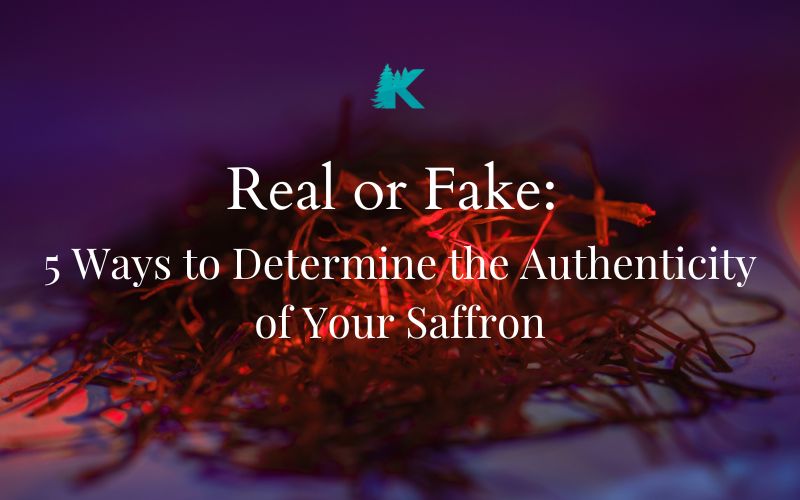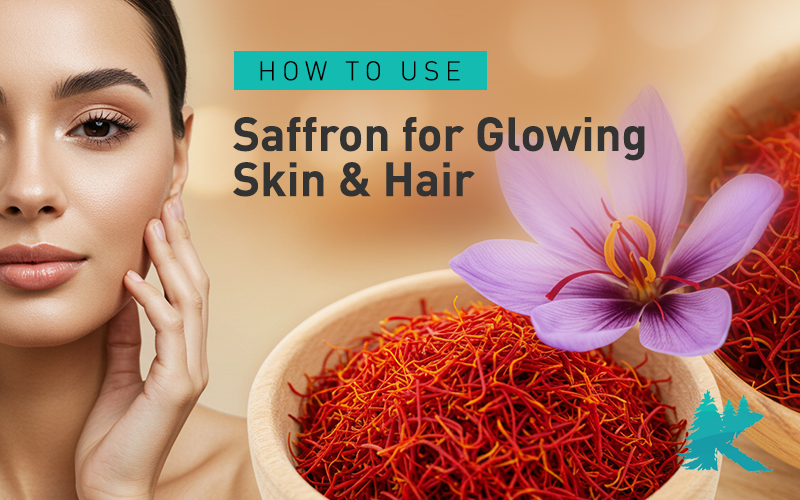Blog
Real or Fake: 5 Ways to Determine the Authenticity of Your Saffron

Introduction
Saffron, often lovingly called the “golden spice,” holds a special place for its stunning color, captivating scent, and one-of-a-kind taste. This spice is like a treasure in the world of cooking and ancient remedies cherished across different cultures.
But, there’s a catch – because it’s so valuable, saffron has fallen victim to fakes and tricks.
In this blog post, we’re going to delve into this concern and take our time to give you five trustworthy methods to figure out if your saffron is the real deal.
Our goal? To make sure you’re not being fooled and that you’re truly getting the authentic saffron experience.
1. Know Your Source
If you want to make sure that the saffron you’re getting is a real deal, there’s a pretty simple and reliable way to go about it. To start off, try to buy your saffron from a source that’s well-known and trusted. This could be a reputable store, a local market that’s been around for a while, or even a reliable online platform. Look for places where people have left positive reviews and where they have a track record of selling authentic saffron.
Now, if you’re checking out saffron at a local market, it’s a good idea to have a chat with the person selling it. Strike up a conversation and see how much they know about saffron. A genuine seller who’s selling the real thing will likely be really excited to share info about where the saffron comes from, how it’s grown, and the best way to store it.
The key is to buy from a trusted source and don’t hesitate to ask questions to make sure you’re getting the genuine saffron experience. This approach can help you enjoy the true flavors and benefits of saffron in your cooking and other uses.
2. Examine the Color
When you’re examining real saffron threads, you’ll notice that they have a beautiful, deep red color that gradually transitions to a warm orange shade at the tips. This unique coloring comes from crocin, a natural pigment found in the saffron.
To check whether your saffron is authentic, you can try a simple test. Place a few threads in a small cup of lukewarm water or milk. If the saffron is genuine, it will start releasing its vibrant color within about 10 to 15 minutes.
On the other hand, if you’re dealing with fake saffron, you might see a faint color or no change in the liquid’s color at all. If the saffron you’re testing quickly turns the liquid a bright color, it’s probably not the real deal and might contain artificial dyes.

3. Smell the Aroma
The aroma of saffron is often described as floral, slightly sweet, and with hints of honey. This distinct fragrance is a result of the presence of compounds such as safranal. To test the authenticity of your saffron’s aroma, gently crush a few threads between your fingers.
If the aroma is weak, musty, or smells like hay, it’s a sign that the saffron might be fake or of low quality. Authentic saffron should release a strong and captivating aroma that’s instantly recognizable.
4. Feel the Texture
When you hold genuine saffron threads in your hand, you’ll notice that they’re delicate and brittle. If you were to gently touch them, they would easily crumble into a fine powder between your fingers. It’s almost as if they’re so delicate that they can’t hold their shape when you touch them. This fragility is a good sign that you’re dealing with real saffron.
Now, on the flip side, if you were to encounter fake saffron, the texture would be quite different. Counterfeit saffron often has a strange rubbery or plastic-like feel to it. When you try to rub the threads between your fingers, they might not break down as easily as genuine saffron. This odd texture is a clue that something might be off.
The reason for this difference in texture is quite interesting. Sometimes, people who create fake saffron use materials like plastic to mimic the appearance of saffron threads. And that’s why the texture ends up feeling quite unnatural and unlike the delicate and crumbly nature of the real thing.
So, as you explore the texture of saffron threads, remember that the genuine ones will crumble delicately between your fingers, while the fake ones might feel strangely rubbery or plastic-like. It’s like nature has given us this tactile way to distinguish the real saffron from the impostors.
5. Check for Residue
When you’re out shopping for powdered saffron, it’s really important to watch out for any tricks that might be played by unscrupulous sellers. Sometimes, they mix other things with saffron just to make more money. So, here’s how you can make sure the saffron you’re buying is the real deal.
Take a moment to put a small amount of the powdered saffron onto a clean white tissue or a paper towel. Next, put a few drops of water on it. Now, pay close attention.
Genuine saffron will slowly start turning the water red, releasing its distinct color. It’s like watching a tiny burst of sunset in water. But if what you see is no change in color or some weird, different colors being left behind, then you might be dealing with fake saffron.
Those odd colors could be signs that there’s stuff mixed in there that shouldn’t be, like fillers or additives.
Final Thoughts

In a world where the desire for saffron keeps growing, the unfortunate truth is that fake and impure saffron products are becoming more common. Recognizing the real deal isn’t just important for your cooking adventures but also for experiencing all the wonderful health advantages that come with this special spice.
By understanding where your saffron comes from, observing its color and scent, touching its texture, and inspecting for any leftover residue, you equip yourself with the ability to tell apart genuine saffron from fakes.
For a trustworthy source of authentic saffron, visit Kashmers.com, where you can explore a wide range of premium saffron products that will elevate your culinary experiences.
Always remember, even a bit of knowledge can make a huge difference in ensuring you get to enjoy the true magic of this golden treasure fully.
